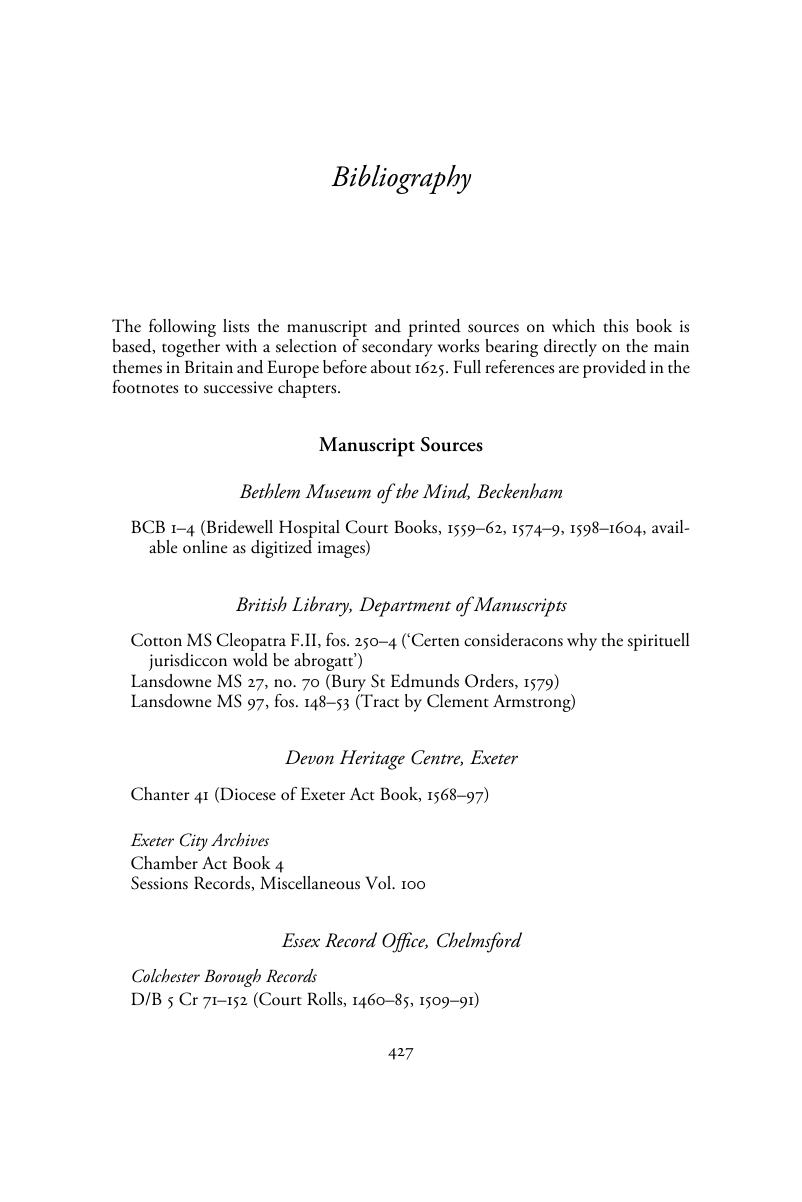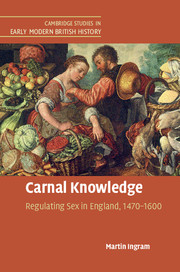Book contents
- Carnal Knowledge
- Cambridge Studies in Early Modern British History
- Carnal Knowledge
- Copyright page
- Dedication
- Contents
- Tables
- Maps
- Preface
- Conventions and Abbreviations
- Prologue
- Chapter 1 Contexts and Perspectives
- Chapter 2 Marriage, Fame and Shame
- Chapter 3 ‘Bawdy Courts’ in Rural Society before 1530
- Chapter 4 Urban Aspirations
- Chapter 5 Stews-Side?
- Chapter 6 London Church Courts before the Reformation
- Chapter 7 Civic Moralism in Yorkist and Early Tudor London
- Chapter 8 Sex and the Celibate Clergy
- Chapter 9 Reform and Reformation, 1530–58
- Chapter 10 Towards the New Jerusalem?
- Chapter 11 Brought into Bridewell
- Chapter 12 Regulating Sex in Late Elizabethan Times
- Bibliography
- Index
- References
Bibliography
Published online by Cambridge University Press: 13 July 2017
- Carnal Knowledge
- Cambridge Studies in Early Modern British History
- Carnal Knowledge
- Copyright page
- Dedication
- Contents
- Tables
- Maps
- Preface
- Conventions and Abbreviations
- Prologue
- Chapter 1 Contexts and Perspectives
- Chapter 2 Marriage, Fame and Shame
- Chapter 3 ‘Bawdy Courts’ in Rural Society before 1530
- Chapter 4 Urban Aspirations
- Chapter 5 Stews-Side?
- Chapter 6 London Church Courts before the Reformation
- Chapter 7 Civic Moralism in Yorkist and Early Tudor London
- Chapter 8 Sex and the Celibate Clergy
- Chapter 9 Reform and Reformation, 1530–58
- Chapter 10 Towards the New Jerusalem?
- Chapter 11 Brought into Bridewell
- Chapter 12 Regulating Sex in Late Elizabethan Times
- Bibliography
- Index
- References
Summary

- Type
- Chapter
- Information
- Carnal KnowledgeRegulating Sex in England, 1470–1600, pp. 427 - 449Publisher: Cambridge University PressPrint publication year: 2017



